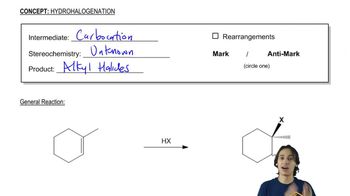Show how hex-1-yne might be converted to
f. 2,2-dibromohexane.
 Verified step by step guidance
Verified step by step guidance Verified video answer for a similar problem:
Verified video answer for a similar problem:



 1:01m
1:01mMaster General properties of double addition reactions to alkynes. with a bite sized video explanation from Johnny
Start learning